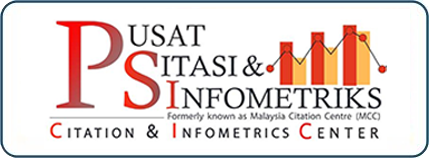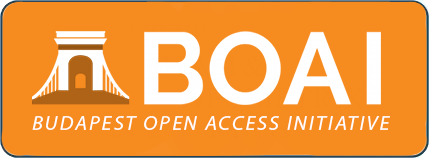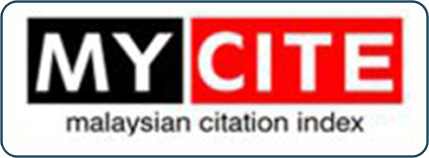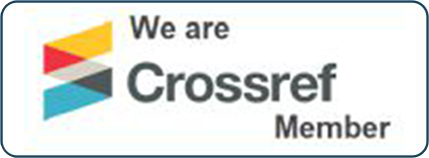Blockchain Technology Suitability in Inter-Organisational Workflows
A Thematic Review of E-Payment Process in the Malaysian Public Sector
DOI:
https://doi.org/10.33102/jmifr.647Keywords:
Blockchain technology, e-payment, inter-organiational collaboration workflow, Malaysian public sector, thematic reviewAbstract
Blockchain Technology (BCT) is emerging as a transforming tools for inter-organisational collaboration (IOC) workflows, particularly in complex e-payment process within the public sector. In Malaysia, e-payment systems play a significant role in the government’s digital transformation agenda under the MYDigital blueprint. However, challenges such as fragmented operations, manual processes and poor communication undermine the efficiency of transactions between government agencies, acquiring banks and the accounting office. The 2022 Auditor General’s Report revealed inefficiencies, with frequent delays in transferring over RM6.0 billion in government revenue between 2015 and 2020, caused by service provision failures and operational complexities. BCT’s features, including transparency, decentralisation, immutability and automation, position it as a viable solution to these persistent challenges. This study examines trends in BCT-related research from 2017 to 2024 and evaluates key themes relevant to improving IOC workflows. A thematic review (TR) of 35 articles from Scopus and Mendeley was conducted, with thematic analysis performed using ATLAS.ti 24. Seven key themes emerged: autonomous enforcement of penalties, middleware for fragmented systems, automation of manual tasks, service-level agreement (SLA) monitoring platforms, legal aspects of smart contracts, reduction of operational complexity and improved IOC workflow communication. The findings highlight BCT’s potential to address IOC workflow challenges and provide actionable insights for enhancing e-payment processes. These insights are invaluable for public sector organisations aiming to adopt BCT to streamline operations and foster collaboration. Additionally, the study identifies critical avenues for future research, emphasizing the importance of innovative solutions in e-payment systems. BCT’s adoption promises to significantly improve operational efficiency and inter-organisational trust within the public sector.
Downloads
References
Ahmadisheykhsarmast, S., & Sonmez, R. (2020). A smart contract system for security of payment of construction contracts. Automation in Construction, 120. https://doi.org/10.1016/j.autcon.2020.103401
Akter, M., Kummer, T. F., & Yigitbasioglu, O. (2024). Looking beyond the hype: The challenges of blockchain adoption in accounting. International Journal of Accounting Information Systems, 53, 1–20. https://doi.org/10.1016/j.accinf.2024.100681
Alafnan, M. A., & Mohdzuki, S. F. (2024). Malaysia’s National Blockchain Roadmap: A Critical Discourse Analysis of Focus, Goals, and Challenges World Journal of English Language, 14(5), 482–492. https://doi.org/10.5430/wjel.v14n5p482
Anyanwu, A., Dawodu, S. O., Omotosho, A., Akindote, O. J. & Ewuga, S. K. (2023). Review of blockchain technology in government systems: Applications and impacts in the USA. World Journal of Advanced Research and Reviews, 20(3), 863–875. https://doi.org/10.30574/wjarr.2023.20.3.2553
Arjun, R., & Suprabha, K. R. (2020). Innovation and Challenges of Blockchain in Banking: A Scientometric View. International Journal of Interactive Multimedia and Artificial Intelligence, 6(3), 7–14. https://doi.org/10.9781/ijimai.2020.03.004
Atik, A., & Kelten, G. (2021). Blockchain Technology and Its Potential Effects on Accounting: A Systematic Literature Review. Istanbul Business Research, 50(2), 495–515. https://doi.org/10.26650/ibr.2021.51.806870
Bailey, D. E., Faraj, S., Hinds, P. J., Leonardi, P. M., & von Krogh, G. (2022). We Are All Theorists of Technology Now: A Relational Perspective on Emerging Technology and Organizing. Organization Science, 33(1), 1–18. https://doi.org/10.1287/orsc.2021.1562
Bible, W., Raphael, J., & Taylor, P. (2017). Blockchain technology and its potential impact on the audit and assurance profession. CPA (Canada), AICPA (USA), 1–28. https://www.aicpa.org/content/dam/aicpa/interestareas/frc/assuranceadvisoryservices/downloadabledocuments/blockchain-technology-and-its-potential-impact-on-the-audit-and-assurance-profession.pdf
Boner, T., Rodrigues, B., Bocek, T., & Stiller, B. (2023). Deferral: On the feasibility of high-volume blockchain-based referral systems. 5th Conference on Blockchain Research and Applications for Innovative Networks and Services, BRAINS 2023, October, 46–49. https://doi.org/10.1109/BRAINS59668.2023.10316807
Bosco, G., D’Amore, R., Sciarrone, A., & Barile, S. (2024). Managerial and Organizational Implications Arising from the Implementation of Blockchain Technology in Supply Chains: An AS-IS and To-Be Analysis. Administrative Sciences, 14(6), 1–21. https://doi.org/10.3390/admsci14060120
Braun, V., & Clarke, V. (2006). Using thematic analysis in psychology. Qualitative Research in Psychology, 3(2), 77–101. https://doi.org/10.1191/1478088706qp063oa
Bustamante, P., Cai, M., Gomez, M., Harris, C., Krishnamurthy, P., Law, W., Madison, M. J., Murtazashvili, I., Murtazashvili, J. B., Mylovanov, T., Shapoval, N., Vee, A., & Weiss, M. (2022). Government by code? Blockchain applications to public sector governance. Frontiers in Blockchain, 5. https://doi.org/10.3389/fbloc.2022.869665
Çabuk, U. C., Adıgüzel, E., & Karaarslan, E. (2018). A Survey on feasibility and suitability of blockchain techniques for the e-voting systems. Ijarcce, 7(3), 124–134. https://doi.org/10.17148/ijarcce.2018.7324
Cai, C. W. (2021). Triple-entry accounting with blockchain: How far have we come? Accounting and Finance, 61(1), 71–93. https://doi.org/10.1111/acfi.12556
Centobelli, P., Cerchione, R., Del Vecchio, P., Oropallo, E., & Secundo, G. (2022). Blockchain technology design in accounting: Game changer to tackle fraud or technological fairy tale? Accounting, Auditing and Accountability Journal, 35(7), 1566–1597. https://doi.org/10.1108/AAAJ-10-2020-4994
Cepa, K., & Schildt, H. (2019). Technological Embeddedness of Inter-organizational Collaboration Processes. In J, Sydow. And H, Berends. (Eds.), Managing Inter-organizational Collaborations: Process Views. (pp. 91–115). Emerald Publishing Limited. https://doi.org/10.1108/S0733-558X20190000064007
Chang, S. E., Chen, Y. C., & Wu, T. C. (2019). Exploring blockchain technology in international trade: Business process re-engineering for letter of credit. Industrial Management and Data Systems, 119(8), 1712–1733. https://doi.org/10.1108/IMDS-12-2018-0568
Chiu, J., & Koeppl, T. V. (2019). Blockchain-Based Settlement for Asset Trading. The Review of Financial Studies, 32(5), 1716–1753. https://doi.org/10.1093/rfs/hhy122
Chowdhury, E. K., Stasi, A., & Pellegrino, A. (2023). Blockchain Technology in Financial Accounting: Emerging Regulatory Issues. Review of Economics and Finance, 21, 862–868. https://www.researchgate.net/profile/Emon-Chowdhury/publication/372508436_Blockchain_Technology_in_Financial_Accounting_Emerging_Regulatory_Issues/links/64bb129195bbbe0c6e519654/Blockchain-Technology-in-Financial-Accounting-Emerging-Regulatory-Issues.pdf
Dowelani, M., Okoro, C., & Olaleye, A. (2023). Blockchain technology in the clearing and settlement industry in South Africa. Acta Commercii - Independent Research Journal in the Management Sciences, 23(1), 1–12. https://doi.org/10.4102/ac.v23i1.1097
Drummer, D., & Neumann, D. (2020). Is code law? Current legal and technical adoption issues and remedies for blockchain-enabled smart contracts. Journal of Information Technology, 35(4), 337–360. https://doi.org/10.1177/0268396220924669
Du, J., Nielsen, B. B., & Welch, C. (2023). From Buzzword to Biz World: Realizing Blockchain’s Potential in the International Business Context. California Management Review, 66(1), 124–148. https://doi.org/10.1177/00081256231202266
Dwivedi, V., Iqbal, M., Norta, A., & Matulevičius, R. (2023). Evaluation of a Legally Binding Smart-Contract Language for Blockchain Applications. Journal of Universal Computer Science, 29(7), 691–717. https://doi.org/10.3897/jucs.97112
Dwivedi, V., Pattanaik, V., Deval, V., Dixit, A., Norta, A., & Draheim, D. (2022). Legally Enforceable Smart-Contract Languages. ACM Computing Surveys, 54(5), 1–34. https://doi.org/10.1145/3453475
Elsa, J., & Halil, H. (2024). Digital Transformation in Finance: the Role of Accounting Technology. EasyChair Preprint, 12112. https://easychair.org/publications/preprint/GnBW
Faisal, M. N., Sabir, L. Bin, AlNaimi, M. S., Sharif, K. J., & Uddin, S. M. F. (2024). Critical Role of Coopetition Among Supply Chains for Blockchain Adoption: Review of Reviews and Mixed-Method Analysis. Global Journal of Flexible Systems Management, 25(1), 117–136. https://doi.org/10.1007/s40171-023-00369-6
García de Soto, B., Agustí-Juan, I., Hunhevicz, J., Joss, S., Graser, K., Habert, G., & Adey, B. T. (2018). Productivity of digital fabrication in construction: Cost and time analysis of a robotically built wall. Automation in Construction, 92, 297–311. https://doi.org/10.1016/j.autcon.2018.04.004
Goldsby, C., & Hanisch, M. (2022). The boon and bane of blockchain: Getting the governance right. California Management Review, 64(3), 141–168. https://doi.org/10.1177/00081256221080747
Gomaa, A. A., Gomaa, M. I., Boumediene, S. L., & Farag, M. S. (2023). The Creation of One Truth: Single-Ledger Entries for Multiple Stakeholders Using Blockchain Technology to Address the Reconciliation Problem. Journal of Emerging Technologies in Accounting, 20(1), 59–75. https://doi.org/10.2308/JETA-19-06-01-28
Hacker, J., Miscione, G., Felder, T., & Schwabe, G. (2023). Commit or Not? How Blockchain Consortia Form and Develop. California Management Review, 65(3), 110–131. https://doi.org/10.1177/00081256231175530
Ibiyemi, M. O., & Olutimehin, D. O. (2024). Blockchain in supply chain accounting : Enhancing transparency and efficiency. Finance & Accounting Research Journal, 6(6), 1124–1133. https://doi.org/10.51594/farj.v6i6.1246
Ietto, B., Rabe, J., Muth, R., & Pascucci, F. (2023). Blockchain for citizens’ participation in urban planning: The case of the city of Berlin. A value sensitive design approach. Cities, 140, 1–14. https://doi.org/10.1016/j.cities.2023.104382
Jabatan Audit Negara Malaysia. (2022). Laporan Ketua Audit Negara 2021 Siri 1 - Aktiviti Kementerian/Jabatan Kerajaan Persekutuan Dan Badan-Badan Berkanun Persekutuan. Percetakan Nasional Malaysia Berhad. https://www.audit.gov.my
Jackson, D., & Allen, C. (2024). Technology adoption in accounting: the role of staff perceptions and organisational context. Journal of Accounting & Organizational Change, 20(2), 205–227. https://doi.org/10.1108/JAOC-01-2023-0007
Jahagirdar, S. U. (2023). Leveraging Blockchain Technology for Sla Leveraging Blockchain Technology for SLA Enforcement in Health Care Cloud Partnerships Enforcement in Health Care Cloud Partnerships [Degree Master, California State University]. CSUSB ScholarWorks. https://scholarworks.lib.csusb.edu/etd/1713/
Jayasuriya, D. D., & Sims, A. (2023). From the abacus to enterprise resource planning: Is blockchain the next big accounting tool? Accounting, Auditing & Accountability Journal, 36(1), 24–62. https://doi.org/10.1108/AAAJ-08-2020-4718
Kang, K., Liu, X., Jiang, Y., Lee, K. K. H., Wan, S. K. W., Huang, G. Q., & Zhong, R. Y. (2022). Blockchain opportunities for construction industry in Hong Kong: a case study of RISC and site diary. Construction Innovation, 23(2), 443–466. https://doi.org/10.1108/CI-08-2021-0153
Kassmi, I. El, & Jarir, Z. (2021). Blockchain-oriented Inter-organizational Collaboration between Healthcare Providers to Handle the COVID-19 Process. International Journal of Advanced Computer Science and Applications, 12(12), 762 – 780. https://doi.org/10.14569/IJACSA.2021.0121294
Khan, S., Shael, M., Majdalawieh, M., Nizamuddin, N., & Nicho, M. (2022). Blockchain for governments: The case of the Dubai government. Sustainability, 14(11), 1–22. https://doi.org/10.3390/su14116576
Khatib, M. El, Mulla, A. Al, & Ketbi, W. Al. (2022). The role of blockchain in e-governance and decision-making in project and program management. Advances in Internet of Things, 12(03), 88–109. https://doi.org/10.4236/ait.2022.123006
Khelifi, A., Khalil, A. D., & Ehtesham, H. (2023). Improving the Resume Verification Process of Financial Professionals Using Blockchain Smart Contracts. AIP Conference Proceedings, 2812, (1). https://doi.org/10.1063/5.0161365
Kostić, N., & Sedej, T. (2022). Blockchain Technology, Inter-Organizational Relationships, and Management Accounting: A Synthesis and a Research Agenda. Accounting Horizons, 36(2), 123–141. https://doi.org/10.2308/HORIZONS-19-147
Kshetri, N. (2023). Blockchain’s Role in Enhancing Quality and Safety and Promoting Sustainability in the Food and Beverage Industry. Sustainability, 15(23), 1–23. https://doi.org/10.3390/su152316223
Kumar, D., Kumar, S., & Joshi, A. (2023). Assessing the viability of blockchain technology for enhancing court operations. International Journal of Law and Management, 65(5), 425–439. https://doi.org/10.1108/IJLMA-03-2023-0046
Ministry of Science Innovation and Technology. (2021). National Blockchain Roadmap 2021-2025. https://www.mosti.gov.my/wp-content/uploads/2022/08/National-Blockchain-Roadmap-2021-2025.pdf
Mohamad, A. A. (2024, September 19). Zahid: Use blockchain to boost transparency, reduce fraud in halal certification. New Straits Times. https://www.nst.com.my/news/nation/2024/09/1107513/zahid-use-blockchain-boost-transparency-reduce-fraud-halal-certification
Mohammed, A., Potdar, V., Quaddus, M., & Hui, W. (2023). Blockchain Adoption in Food Supply Chains: A Systematic Literature Review on Enablers, Benefits, and Barriers. IEEE Access, 11, 14236–14255. https://doi.org/10.1109/ACCESS.2023.3236666
MyDigital Corporation. (2023). Accelerating Growth of Malaysia ’ s Digital Economy. Ministry of Economy. https://www.mydigital.gov.my/publications/
Najib, N. (2025, January 14). PM: Govt exploring policy for crypto, blockchain tech. News Straits Times. https://www.nst.com.my/news/nation/2025/01/1160917/pm-govt-exploring-policy-crypto-blockchain-tech#google_vignette
Nanayakkara, S., Perera, S., Senaratne, S., Weerasuriya, G. T., & Bandara, H. M. N. D. (2021). Blockchain and Smart Contracts: A Solution for Payment Issues in Construction Supply Chains. Informatics, 8(2), 1–16. https://doi.org/10.3390/informatics8020036
Neidhardt, N., Köhler, C., & Nüttgens, M. (2018). Cloud service billing and service level agreement monitoring based on blockchain. CEUR Workshop Proceedings, 2097, 65–69. https://ceur-ws.org/Vol-2097/paper11.pdf
Nguyen, T.-V., Lê, L.-S., Shah, S. A., Hameed, S., & Draheim, D. (2023). PenChain: A Blockchain-Based Platform for Penalty-Aware Service Provisioning. IEEE Access, 12, 1005–1030. https://doi.org/10.1109/access.2023.3344038
Nikbakht, E., Shahrokhi, M., & Corriette, A. (2020). Blockchain & distributed financial data. Managerial Finance, 46(6), 749–760. https://doi.org/10.1108/MF-10-2018-0470
Odunlami, A. M., & Samuel, D. J. (2023). Perception of Blockchain Technology in the Financial Service Industry - Is the hype surrounding blockchain technology warranted? [Master’s Thesis, Uppsala University]. Digitala Vetenskapliga Arkivet. https://www.diva-portal.org/smash/record.jsf?pid=diva2%3A1774055&dswid=8013
Onyshchenko, O., Shevchuk, K., Shara, Y., Koval, N., & Demchuk, O. (2022). Industry 4.0 and accounting: directions, challenges, opportunities. Independent Journal of Management & Production, 13(3), 161–195. https://doi.org/10.14807/ijmp.v13i3.1993
Qadir, A. M. A., & Arab, H. R. (2023). Revolutionizing Accounting and Assurance: The Untapped Potential of Blockchain. Journal of Survey in Fisheries Sciences, 10(3S), 5852–5874. http://sifisheriessciences.com/journal/index.php/journal/article/view/1992
Rachad, A., Bouragba, K., & Ouzzif, M. (2022, October 26–29). Smart contract for cloud SLA using Service Oriented Architecture and Blockchain. 2022 9th International Conference on Wireless Networks and Mobile Communications, WINCOM Rabat, Morocco. https://doi.org/10.1109/WINCOM55661.2022.9966420
Roszkowska, P. (2021). Fintech in financial reporting and audit for fraud prevention and safeguarding equity investments. Journal of Accounting and Organizational Change, 17(2), 164–196. https://doi.org/10.1108/JAOC-09-2019-0098
Saadan, N., Khairi, K. F., Ahmad, A., & Tahir, A. M. (2024). Mapping Blockchain Adoption Challenges. The Journal of Muamalat and Islamic Finance Research, 21(1), 101–126. https://doi.org/10.33102/jmifr.576
Sabri, A. A. A., Urus, S. T., & Bakar, N. A. (2023). Blockchain Attributes in Malaysia: A Qualitative Approach. Management and Accounting Review, 22(2), 31–61. https://doi.org/10.24191/mar.v22i02-02
Sandner, P., Lange, A., & Schulden, P. (2020). The Role of the CFO of an Industrial Company: An Analysis of the Impact of Blockchain Technology. Future Internet, 12(8), 1–16. https://doi.org/10.3390/fi12080128
Schuetz, S., & Venkatesh, V. (2020). Blockchain, adoption, and financial inclusion in India: Research opportunities. International Journal of Information Management, 52, 1–8. https://doi.org/10.1016/j.ijinfomgt.2019.04.009
Shahaab, A., Khan, I. A., Maude, R., Hewage, C., & Wang, Y. (2023). Public service operational efficiency and blockchain – A case study of Companies House, UK. Government Information Quarterly, 40(1), 1–17. https://doi.org/10.1016/j.giq.2022.101759
Sharma, S. K., Dwivedi, Y. K., Misra, S. K., & Rana, N. P. (2024). Conjoint Analysis of Blockchain Adoption Challenges in Government. Journal of Computer Information Systems, 64(2), 173–186. https://doi.org/10.1080/08874417.2023.2185552
Spahiu, E., Spagnoletti, P., & Sposito, A. (2024). Building a Blockchain-Based Platform for Interbank Collaboration. International Journal of Electronic Commerce, 28(2), 269–291. https://doi.org/10.1080/10864415.2024.2332051
Tan, W. K., & Sundarakani, B. (2021). Assessing blockchain technology application for freight booking business: a case study from Technology Acceptance Model perspective. Journal of Global Operations and Strategic Sourcing, 14(1), 202–223. https://doi.org/10.1108/JGOSS-04-2020-0018
Treiblmaier, H., Rejeb, A., van Hoek, R., & Lacity, M. (2021). Intra- and Interorganizational Barriers to Blockchain Adoption: A General Assessment and Coping Strategies in the Agrifood Industry. Logistics, 5(4), 1–20. https://doi.org/10.3390/logistics5040087
Treleaven, P., Gendal Brown, R., & Yang, D. (2017). Blockchain Technology in Finance. Computer, 50(9), 14–17. https://doi.org/10.1109/MC.2017.3571047
Tsai, W. T., Luo, Y., Deng, E., Zhao, J., Ding, X., Li, J., & Yuan, B. (2020). Blockchain systems for trade clearing. Journal of Risk Finance, 21(5), 469–492. https://doi.org/10.1108/JRF-02-2017-0022
Udokwu, C., Brandtner, P., Norta, A., Kormiltsyn, A., & Matulevičius, R. (2021). Implementation and evaluation of the DAOM framework and support tool for designing blockchain decentralized applications. International Journal of Information Technology, 13(6), 2245–2263. https://doi.org/10.1007/s41870-021-00816-6
Vedapradha, R., & Ravi, H. (2023). Blockchain: an EOM approach to reconciliation in banking. Innovation and Management Review, 20(1), 17–27. https://doi.org/10.1108/INMR-05-2020-0060
Walde, R. B., & Yadav, A. K. (2022). Blockchain technology for e-government. International Journal for Research in Applied Science and Engineering Technology, 10(8), 1698–1703. https://doi.org/10.22214/ijraset.2022.46487
Weerakoon, H.D. and Chandanie, H., (2021). Analysis of feasibility of blockchain technology for international trade related to Sri Lankan construction industry. In Sandanayake, Y.G., Gunatilake, S. and Waidyasekara, K.G.A.S. (Eds.), Proceedings of the 9th World Construction Symposium (pp. 75–85). Ceylon Institute of Builders. https://ciobwcs.com/downloads/WCS2022_Full_Proceedings.pdf
Wong, S., Kun, J., Yeung, W., Lau, Y., Kawasaki, T., & Kwong, R. (2024). A Critical Literature Review on Blockchain Technology Adoption in Supply Chains. Sustainability, 16(12), 1–40. https://doi.org/10.3390/su16125174
Yap, J. B. H., Chow, I. N., & Shavarebi, K. (2019). Criticality of Construction Industry Problems in Developing Countries: Analyzing Malaysian Projects. Journal of Management in Engineering, 35(5). https://doi.org/10.1061/(ASCE)ME.1943-5479.0000709
Yassin, A. M., Aslan, H. K., & Abdel Halim, I. T. (2023). Smart automotive diagnostic and performance analysis using blockchain technology. Journal of Sensor and Actuator Networks, 12(2). https://doi.org/10.3390/jsan12020032
Zainutdinova, E. V. (2021). Legal Issues of Smart Contracts in Contract Law. Journal of Siberian Federal University. Humanities & Social Sciences, 14(11), 1626–1634. https://doi.org/10.17516/1997-1370-0845
Zairul, M. (2020). A thematic review on student-centred learning in the studio education. Journal of Critical Reviews, 7(2), 504–511. http://www.solemethodology.com/uploads/6/3/4/4/63446915/zairul_-_2020_-_a_thematic_review_on_student-centred_learning_in_the_studio_education.pdf
Zairul, M. (2021a). Opening the pandora’s box of issues in the industrialised building system (IBS) in malaysia: A thematic review. Journal of Applied Science and Engineering, 25(2), 297–310. https://doi.org/10.6180/jase.202204_25(2).0006
Zairul, M. (2021b). The recent trends on prefabricated buildings with circular economy (CE) approach. Cleaner Engineering and Technology, 4, 1–12. https://doi.org/10.1016/j.clet.2021.100239
Zairul, M., & Zaremohzzabieh, Z. (2023). Thematic Trends in Industry 4.0 Revolution Potential towards Sustainability in the Construction Industry. Sustainability, 15(9), 1–21. https://doi.org/10.3390/su15097720
Downloads
Published
How to Cite
Issue
Section
License
Copyright (c) 2025 Khairil Faizal Khairi, Naharudin Saadan, Abdullah Mohammed Ahmed Ayedh

This work is licensed under a Creative Commons Attribution 4.0 International License.















